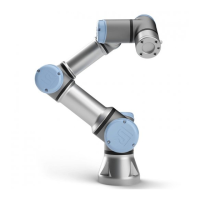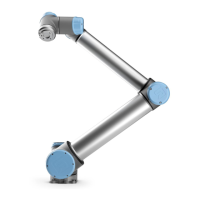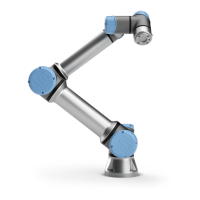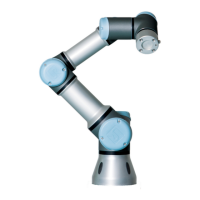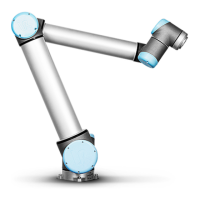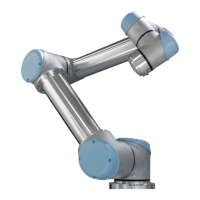Depending on the circumstances, the robot can initiate three types of stop categories
defined according to IEC 60204-1. These categories are defined in the following table.
Stop
Category
Description
0 Stop the robot by immediate removal of power.
1
Stop the robot in an orderly, controlled manner. Power is removed once the
robot is stopped.
2
*Stop the robot with power available to the drives, while maintaining the
trajectory. Drive power is maintained after the robot is stopped.
*Universal Robots robots’ Category 2 stops are further described as SS1 or as SS2 type
stops according to IEC 61800-5-2.
3.3. Configurable Safety Functions
Universal Robots robot safety functions, as listed in the table below, are in the robot but
are meant to control the robot system i.e. the robot with its attached tool/end effector.
The robot safety functions are used to reduce robot system risks determined by the risk
assessment. Positions and speeds are relative to the base of the robot.
Safety
Function
Description
Joint
Position
Limit
Sets upper and lower limits for the allowed joint positions.
Joint Speed
Limit
Sets an upper limit for joint speed.
Safety
Planes
Defines planes, in space, that limit robot position. Safety planes limit
either the tool/end effector alone or both the tool/end effector and the
elbow.
Tool
Orientation
Defines allowable orientation limits for the tool.
Speed Limit
Limits maximum robot speed. The speed is limited at the elbow, at the
tool/end effector flange, and at the center of the user-defined tool/end
effector positions.
Force Limit
Limits maximum force exerted by the robot tool/end effector and elbow
in clamping situations. The force is limited at the tool/end effector,
elbow flange and center of the user-defined tool/end effector positions.
UR5e 18 User Manual
3.Safety-related Functions and Interfaces
Copyright © 2009–2021 by UniversalRobotsA/S. All rights reserved.
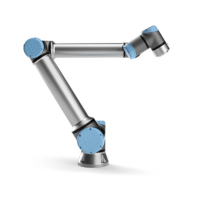
